Note from The Redneck: I'm still working on these pages, so some of the links may not be operating. Check back often, as I will be updating as much as possible.
Designed for 800 x 600 resolution - other resolutions might look kind of funky!
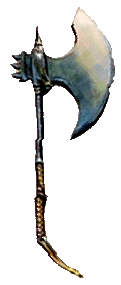
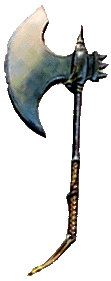

There's something about Jacksonville, Florida. Maybe it's the water, maybe it's the air, but the fact remains that an awful lot of talent has come from this one town. Not only did it produce such legendary bands as Lynyrd Skynyrd, Grinderswitch, .38 Special and Blackfoot, but another band, itself with an amazing array of talent, was produced in the last half of the 1970s. This was Molly Hatchet.
Now, Molly Hatchet sounds like a name with a story behind it, but I've never been able to find one. It obviously refers to an 18th-century ?lady? named Hatchet Molly. Seems Miss Molly liked to behead her lovers and her favorite utensil was her trusty hatchet. That's one sure way for a girl to keep her reputation! But what this has to do with the band is anyone's guess. Sometimes a name is just that - a name. After all, the Commodores reportedly got their name by a blindfolded member pointing to a word in a dictionary (By the way, look it up sometime; The word next to "commodore" is "commode"... a lucky break for the Commodores, huh?).
Danny Joe Brown, Dave Hlubek, Duane and Steve Roland, Banner Thomas and Bruce Crump added their own twist to the arsenal of Southern Rock bands, incorporating more of the Rock 'N' Roll style into their music than previous bands had. The combination worked, and sent Molly Hatchet on a whirlwind ride with fame. Apparently the release of two albums in 1981 caused Hatchet overload. Whatever the reason, it would be two years before the next Molly Hatchet album was released. In 1983, No Guts, No Glory was released, with Danny Joe Brown back at the helm again. One notable difference was the style of the album cover. Molly Hatchet had always used violent animations for the covers, but this time an actual photo of the band was used.
A few line-up changes accompanied this album as well. Banner Thomas was replaced by Riff West on bass, and Bobby Borden was now on drums, replacing Bruce Crump. The music, however was solid Hatchet, and fans were ecstatic.
Molly Hatchet had up till now managed a grueling performance regiment, commonly performing over 200 shows per year. And they would continue to do so. But the recordings would take a back seat to their live performances from now on. Like most of the Southern Rock bands, their best performance was live in front of an audience, not in some studio, so it was only natural that they gave their live shows priority. It would be several years before another album was released.
Not many of the Southern Rock bands still remain, but Molly Hatchet is one notable exception. Despite a complete turnover in band members and Danny Joe Brown's medical problems, they remain today as one of the few bands left from that great era. The tradition continues with their concerts and recordings, and Hatchet fans around the world await their next album or local concert. If you like their music, you'll love them live. Everyone who has ever thrilled to the sounds of such hits as "Gator Country", The Creeper", Bounty Hunter", "Flirtin' With Disaster", "Fall Of The Peacemakers", "Dreams I'll Never See", oh, you get the idea, should see them at least once in their original stage glory. It's an experience you'll never forget.
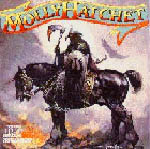
In 1978, after the other Southern Rock Bands were already established, their first album was released, simply titled Molly Hatchet. With their in-your-face music, it quickly developed a following for the new band.
The second album, Flirtin' With Disaster, was released the following year. It quickly followed the first into classic status, with the title track becoming known far and wide. Molly Hatchet was now a full-blown legend.
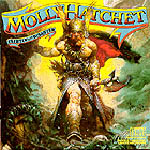
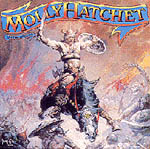
Their third album, Beatin' The Odds, saw the first line-up change for Molly Hatchet. Danny Joe Brown was no longer with them, but was replaced by new vocalist Jimmy Farrar. Jimmy brought with him his own musical style to the band, resulting in a different sound than the two previous albums. Die-hard fans were disappointed, but a whole new group of fans emerged to adore the band's new sound.
1981 saw another release, Take No Prisoners, with Jimmy Farrar as lead vocalist. Again, new fans loved the new sound, while die-hard Hatchet fans yearned for the return of Danny Joe Brown. The music remained the same, but the lyrical style differences between Danny Joe and Jimmy were wide. But the old Hatchet fans wouldn't have to wait for long...
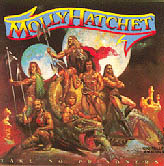
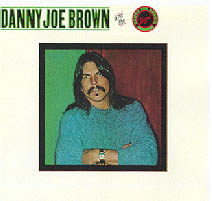
Danny Joe Brown once again emerged with his own album in 1981, The Danny Joe Brown Band. With his new band, made up of Bobby Ingram, Steve Wheeler, Kenny McVay, John Galvin, Buzzy Meekins and Jimmy Glenn, and with the same old vocals that fans had come to know and love, it took the Hatchet fans by storm. One notable change in the band make-up was the addition of a keyboard player, John Galvin. This added a new dimension to the music. 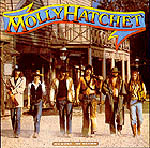
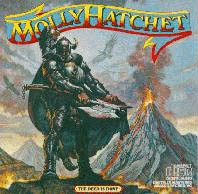
The Deed Is Done saw more changes, with the band moving even closer to its origins. Bruce Crump once again is beating the drums, but Steve Roland is gone without a replacement. Keyboardist John Galvin, from The Danny Joe Brown Band, is added and the covers are once again true to the original style of Molly Hatchet. Of course, so is the music. 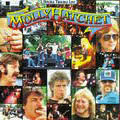 The live album came in 1985. Double Trouble Live covered the entire history of Molly Hatchet, with hits from 1979 to 1984. The band stayed the same, and the music, as always, was incredible. Like most Southern Rock bands, Molly Hatchet was at its best on stage, and this was shown in the album.
The live album came in 1985. Double Trouble Live covered the entire history of Molly Hatchet, with hits from 1979 to 1984. The band stayed the same, and the music, as always, was incredible. Like most Southern Rock bands, Molly Hatchet was at its best on stage, and this was shown in the album.
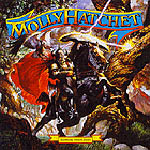
Lightning Strikes Twicewas the next Molly Hatchet Album, released in 1989. One major band change was immediately apparent, Dave Hlubek, who had been a major member since the first album, was missing. His replacement was Bobby Ingram, Danny Joe Brown's longtime friend and former member of The Danny Joe Brown Band. He fit in well with the band and the tradition of hard-driving Rock 'N' Roll continued.
The band took a recording break for a few years, so in 1990 a greatest hits album was released, titled (what else?) Greatest Hits. The album had one major problem - which hits to include? In their career, Molly Hatchet had had numerous hits, so almost any compilation was bound to be somewhat incomplete, even if it was a vastly impressive collection of music. The full history of Molly Hatchet was covered, including songs from the Jimmy Farrar days.
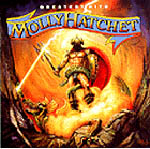
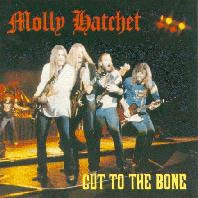
In 1993, it was followed by Cut To The Bone, another compilation of songs from the earlier years, this time with Danny Joe Brown as the lone featured vocalist. During this "break", Molly Hatchet continued to tour a demanding schedule and write new songs.
The band released these new songs in 1996, in the album Devil's Canyon. But time had taken it's toll on the original band members. Danny Joe Brown, in particular, retired from the basnd due to long-standing health problems with diabetes, naming as his replacement Phil McCormack. Bobby Ingram and Jonh Galvin remained, and the band was filled out with newcomers Bryan Basset. Andy McKinney and Mac Crawford. Yet, despite these sweeping changes, the spirit of Molly Hatchet was still alive and well, although not a single original band member remained.
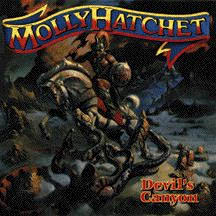
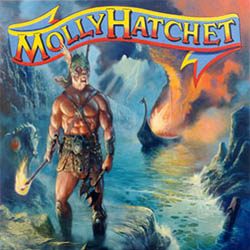
At the time of this writing, the 1998 album Silent Reign Of Heroes is due out in a few days, scheduled for June 16. More information will be available shortly on this latest addition to the Molly Hatchet legend.
Click on any of the above album covers for more info on them.
Or click here for more great Molly Hatchet sites!
Molly Hatchet Songlist - Arranged Alphabetically or by Release Date
Site design ©1998 by James Douglas Tubbs.